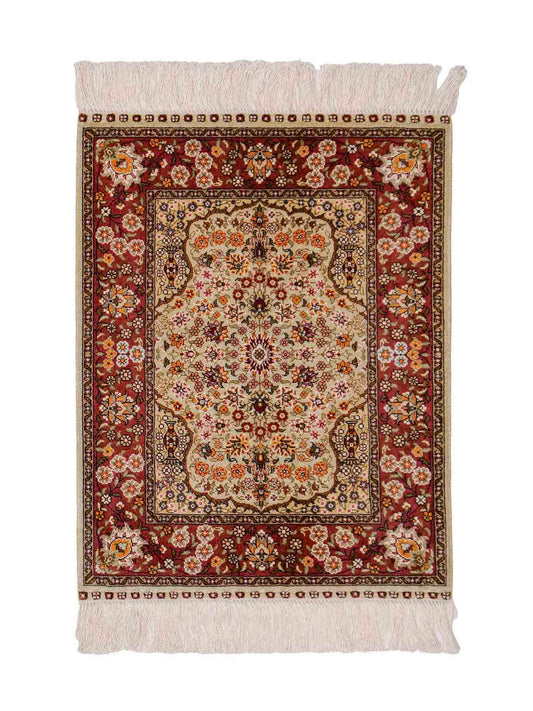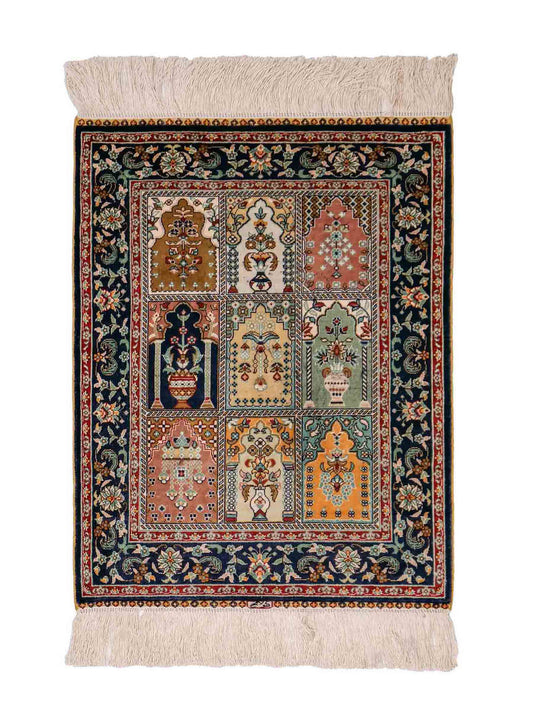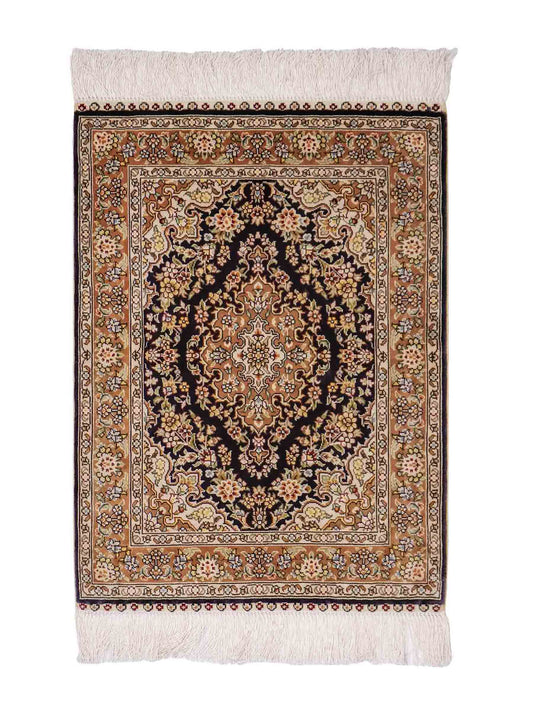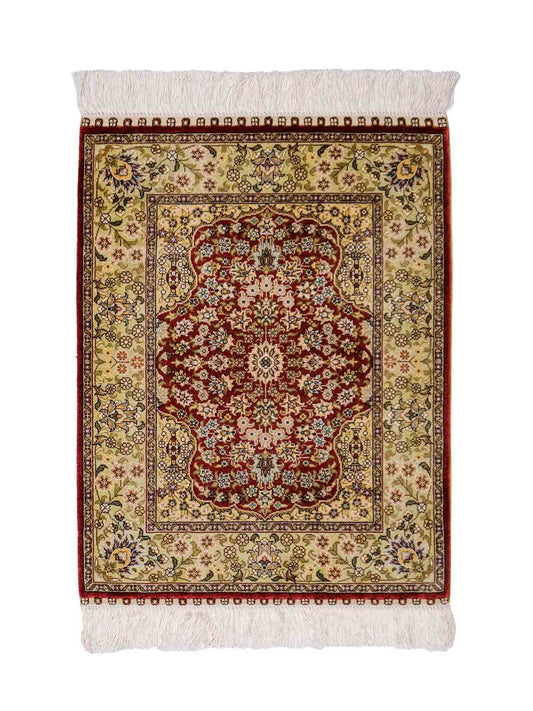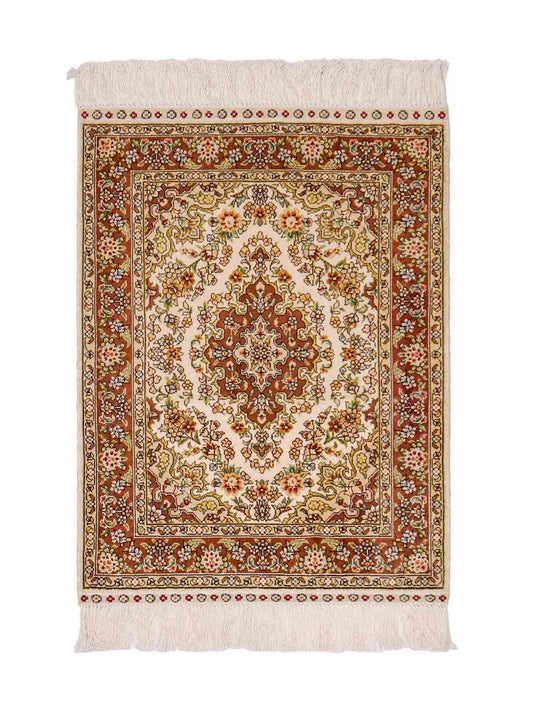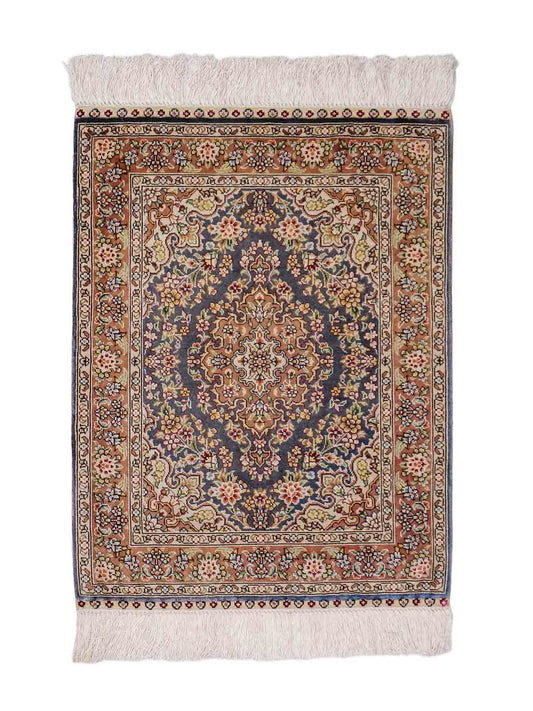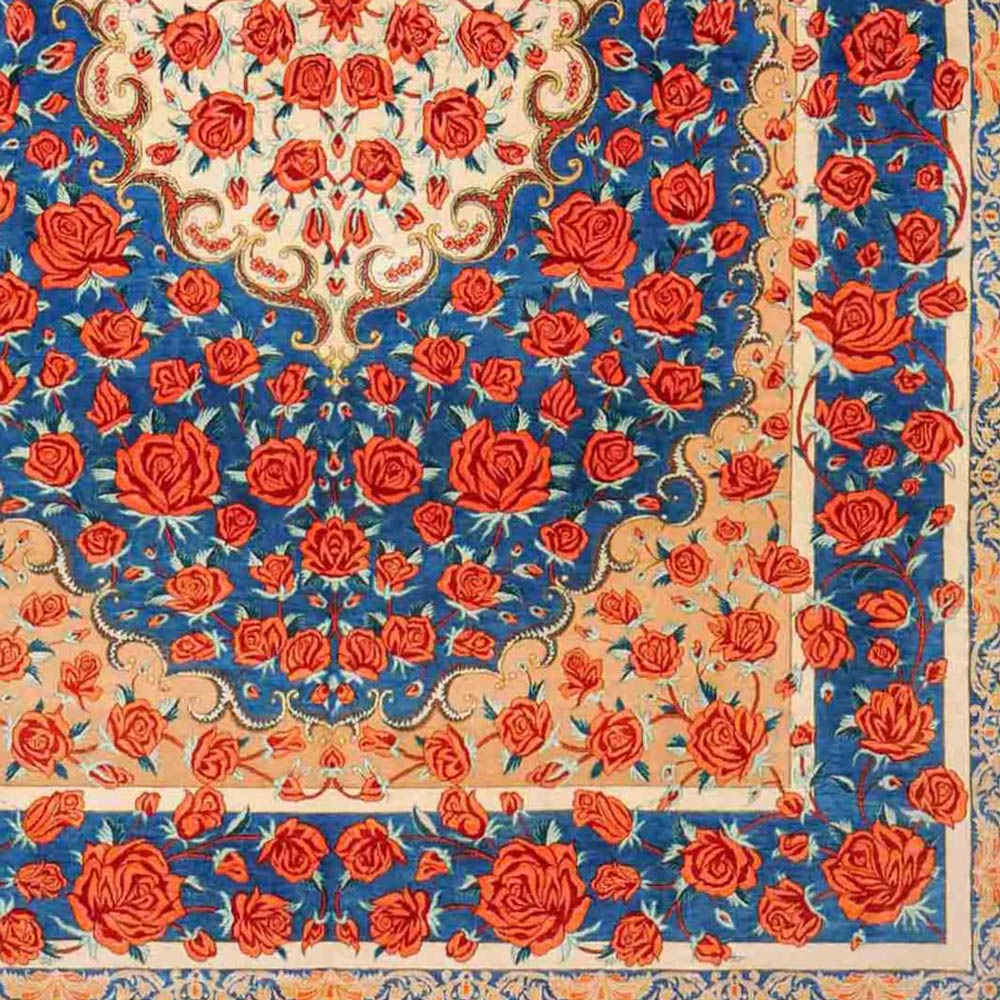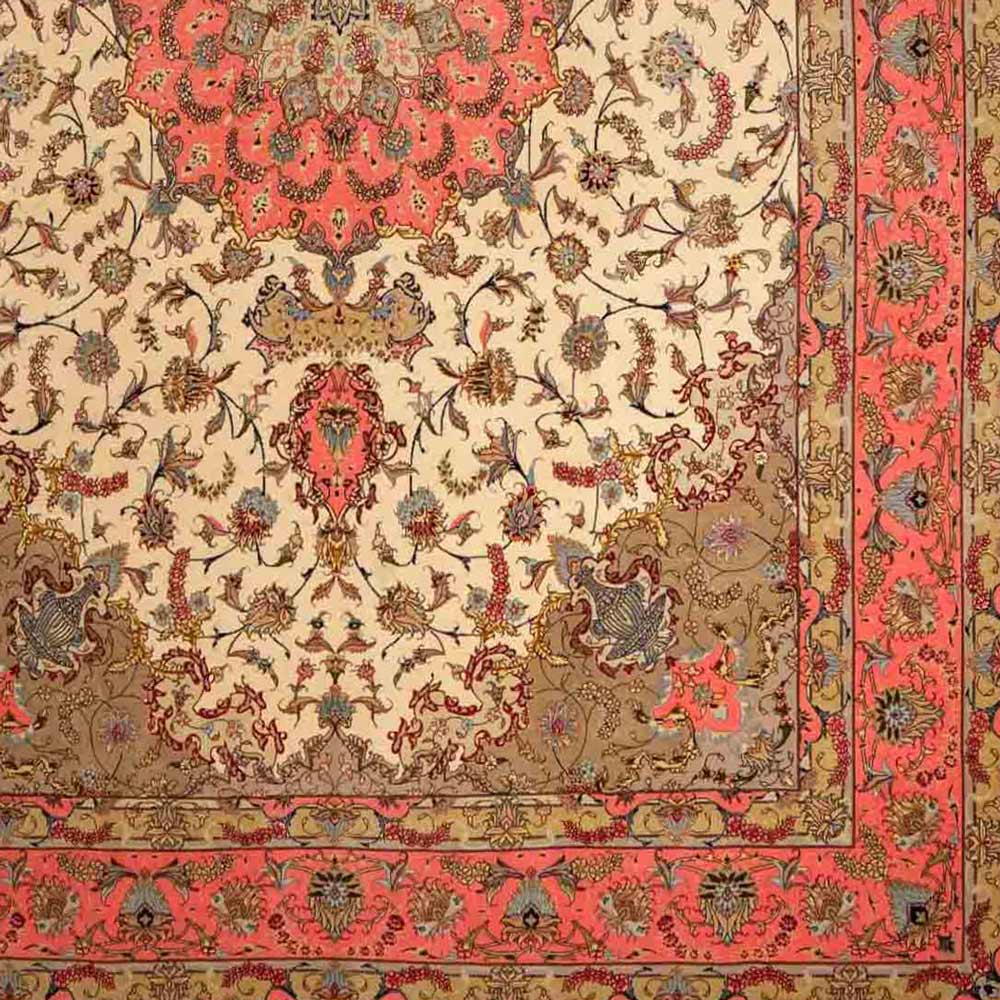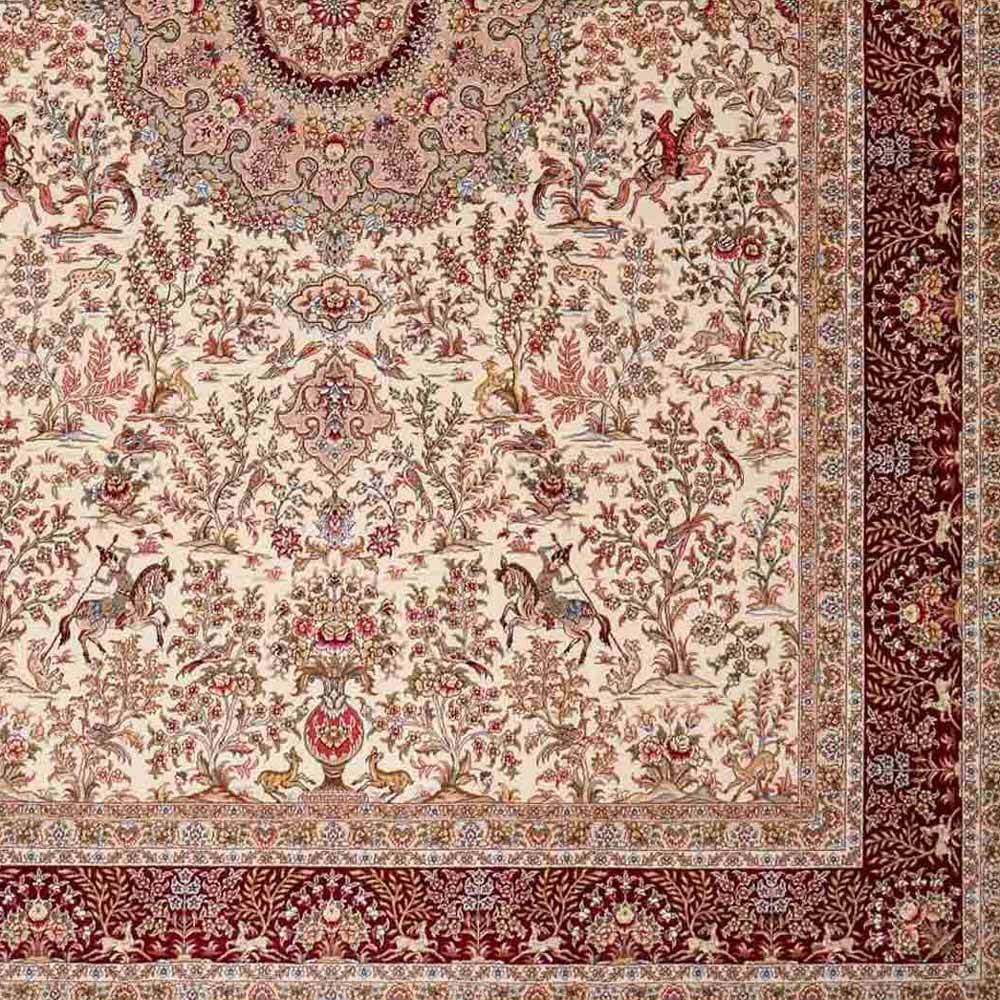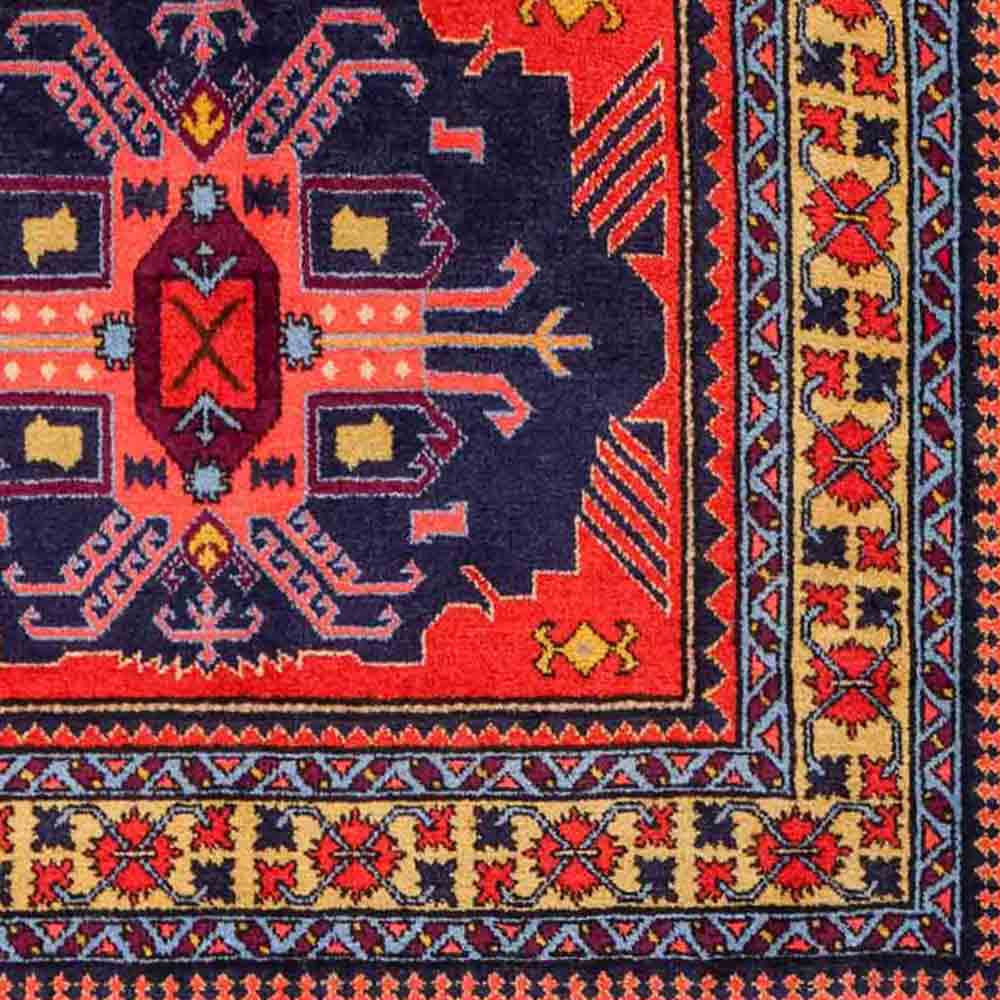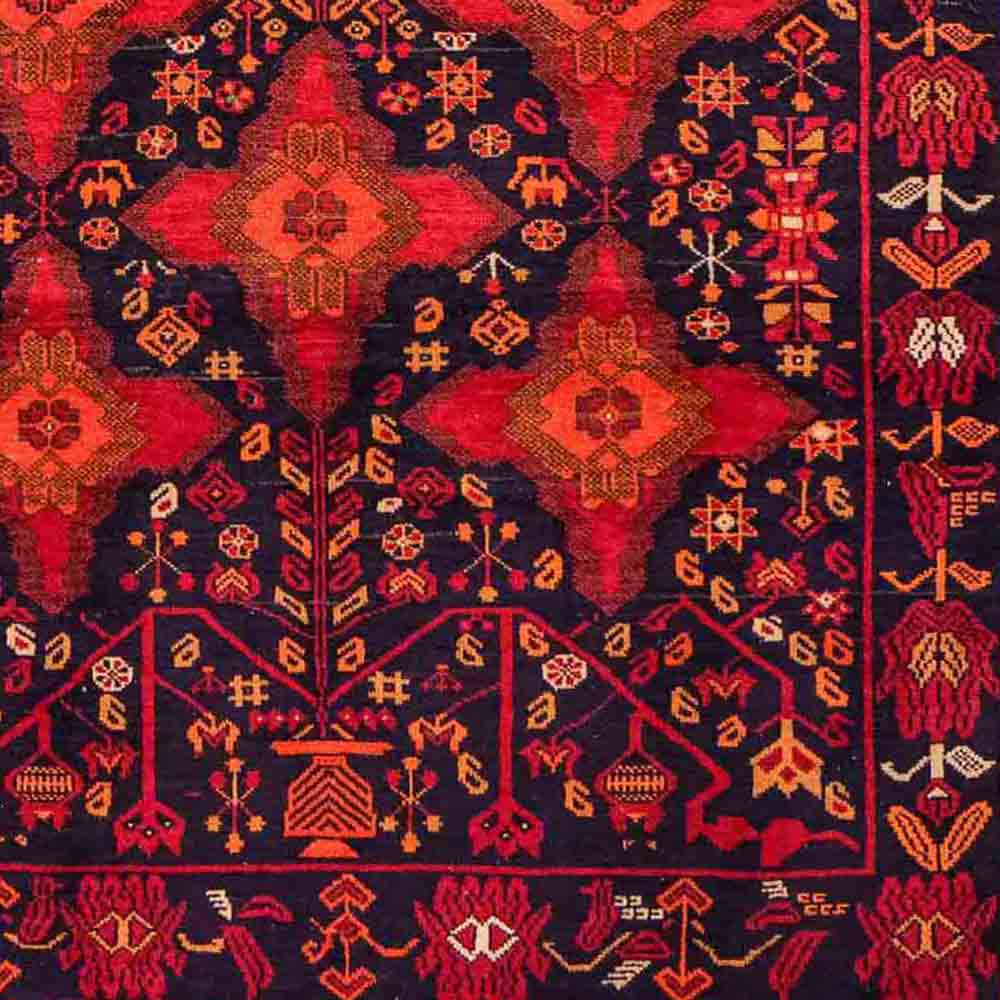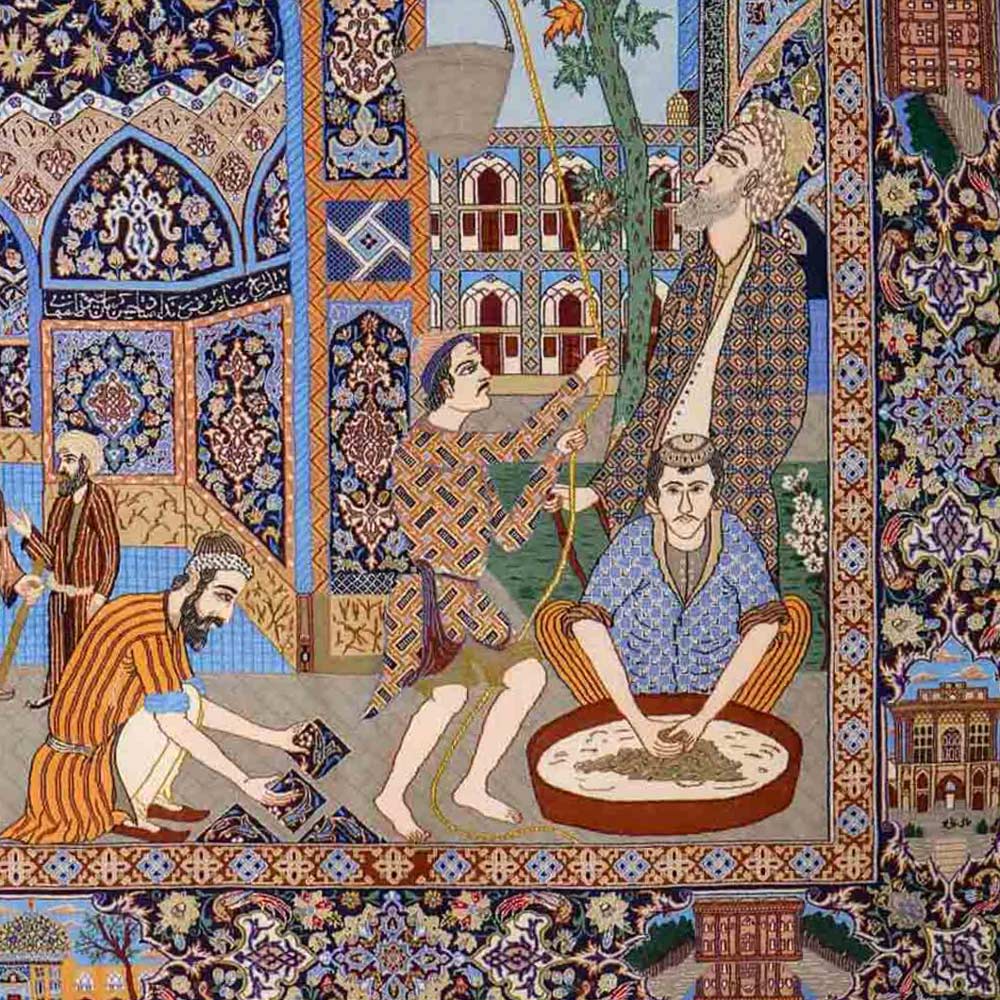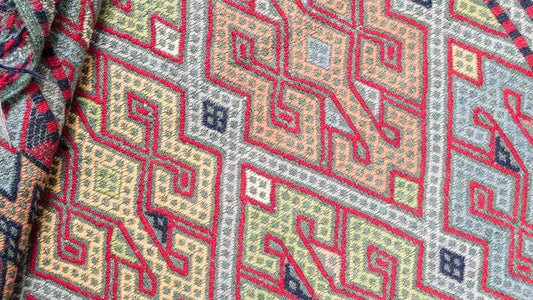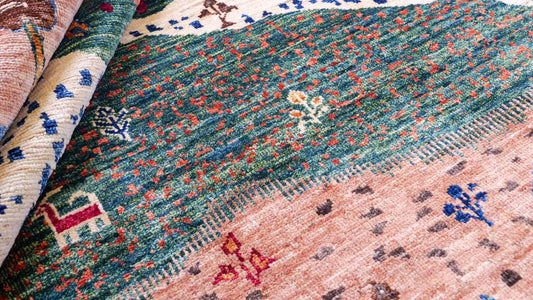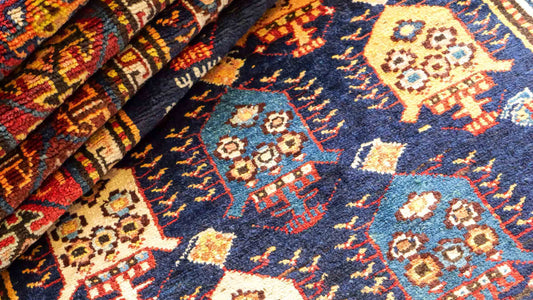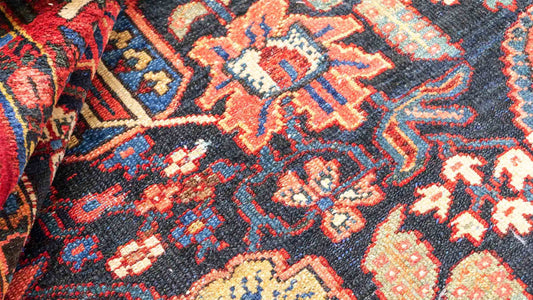
Hereke
Daniel KhademiHereke rugs are the epitome of refined craftsmanship and timeless elegance. Originating from the picturesque town of Hereke near Istanbul, they are considered among the world’s most exquisite and fascinating forms of carpet art. In this guide, you’ll discover everything about their origins, history, production, designs, colors, care, value development, and which interior styles they complement best—plus an expert checklist and care tips.
Hereke Rugs at a Glance
- Origin: Hereke, Turkey (Marmara coast, near Istanbul), an international luxury brand
- Materials: Finest local wool, pure silk or silk-wool blends, natural plant dyes
- Designs: Floral motifs (roses, lilies, tulips), stunning medallions, geometric patterns, figural & pictorial elements
- Knot Density: Very high, usually 400,000–1,500,000 knots/m² (double-knotting, ultra-fine)
- Quality: Top-tier artistry, rich detailing, exceptional sheen and texture, made for longevity
- Colors: Vibrant red & blue, gold, emerald green, cream, delicate pastels, harmonious gradients
- Value: Collectible, investment object, a global symbol of style, culture & quality
- Care: Routine gentle vacuuming, prompt spot cleaning, professional washing recommended
- Investment: Value retention due to scarcity & artisanry, highly regarded worldwide
Explore our curated collection of exclusive Hereke Rugs & Designs —find your one-of-a-kind masterpiece today!
Geography: Hereke – A Coastal Hub of Rug Tradition
Hereke, situated picturesquely on the Marmara Sea near Istanbul, has developed over centuries into a key Turkish center of rug production. Its location offers access to top-quality materials and key trade routes—essential for the craft’s historic evolution.
The region’s temperate climate is ideal for sheep farming and dye-plant cultivation. The wool produced here is prized for its outstanding quality, perfectly suited for rug-making. This climate also allows for plants providing natural dyes, ensuring the rugs’ vivid and durable colors.
These favorable conditions established Hereke as a hotspot for rug craftsmanship, combining traditional techniques with innovative design. Today, Hereke artisans are celebrated for their skill and creativity, preserving heritage while enriching contemporary rug culture.
History: A Heritage of Turkish Rug Art
Hereke rug history reaches back to the 15th century, when Ottoman Sultan Mehmed II actively promoted weaving in the region. He recognized the cultural and economic power of carpets as emblems of prestige and prosperity in Ottoman society. His patronage catalyzed the development of new techniques and designs—the foundation for the area’s later artistic boom.
Hereke’s golden age blossomed in the 19th century as demand from the West soared. European traders discovered the beauty and exclusivity of these rugs, seeking top-quality pieces for export. This demand spurred local innovation, as Hereke artisans perfected their skills and developed distinctive new styles.
During this era, Hereke’s weavers trained in both traditional methods and new creative approaches. The resulting interchange led to rugs that were not only functional but also genuine works of art, marked by increased complexity, mixing botanical, geometric, and figural motifs unique to the region.
Technological innovation played a key role as well: New machinery for wool processing, dyeing, and weaving enhanced both quality and efficiency.
Today, Hereke rugs embody a legacy of heritage, technical progress, and cultural richness.
Meaning: Turkish Symbols of Elegance and Luxury
Today’s Hereke rugs are far more than decorative pieces. They are symbols of luxury and elegance, central to Ottoman and Turkish heritage and identity. Their esteemed history, rich meaning, dazzling designs, and flawless execution lend them cultural significance and enduring allure.
Acclaimed by collectors, connoisseurs, and the general public alike, Hereke rugs—thanks to their unique artistry—command respect in both high-end interiors and museum collections worldwide.
These rugs also inspire art history and contemporary design as outstanding examples of tradition-meets-innovation. Their pattern diversity makes them easy to integrate: whether in modern, minimalist spaces, traditional, opulent interiors, Scandinavian, or even rustic rooms. Hereke rugs can serve as subtle complements or focus points in virtually any living environment.
Hereke Craftsmanship: Mastery, Fineness & Precision
Production process:
- Selection of premium materials & natural dyes
- Creation of intricate patterns by experienced designers
- Meticulous hand-knotting (usually Persian knot/double knot)
- Washing, trimming, and precise quality control for the perfect finish
Knot Density:
A hallmark of Hereke rugs, knot density typically starts at 400,000 knots per square meter and can exceed 1,500,000 in outstanding examples. This allows for highly detailed, complex designs and exceptional durability, enabling the rugs to retain their beauty for decades.
Hereke Designs & Motifs: Creativity & Symbolism
The patterns of Hereke rugs range from historic classics to fresh, modern interpretations. Every rug boasts a unique identity—an artistic signature of Turkish tradition and master-craft.
Typical motifs include:
- Floral: Roses, lilies, tulips—central or repeat patterns—symbolize beauty, paradise gardens, and regional heritage
- Geometric: Symmetrical shapes (diamonds, circles, repeating motifs), symbolizing mathematical precision and harmony
- Medallion: A central medallion encircled by balanced patterns—evoking heaven and paradise, conveying calm and order
- Pictorial: Hunting scenes, dancers, traditional dress—tell stories, reflect cultural values, and add a narrative layer
Traditional Hereke Rug Color Palette
Hereke’s color diversity is iconic—mixing tradition and modernity, always tied to Turkish culture and nature.
- Reds: Energy and joy (crimson, brick red, burgundy)
- Blues: Indigo (spirituality, calm), sky blue (openness, tranquility)
- Gold tones: Luxury and elegance; ocher & metallic gold add extra brightness
- Cream/Ivory/Beige: Subdued warmth and comfort, ideal for living spaces
- Greens: Emerald for vibrancy; olive/moss for grounded naturalness
- Pastels: Soft pinks, light blues for delicacy and contemporary style
Many carpets feature subtle gradients for depth; natural colors ensure eco-friendliness and colorfast beauty over generations.
What to Look for When Buying a Hereke Rug
- Placement: For busy areas, robust wool; for bedrooms or representative spaces, opt for fine silk
- Knot Density: For best detail and value (min. is 400,000 , ideal 800,000+ knots/m²)
- Design: Whether floral, geometric, medallion, or figural—what suits your taste and space best?
- Material Quality: High silk content (cool/soft to the touch), prime wool, genuine natural dyes
- Authenticity: Always ask for a certificate, buy from reputable dealers
- Color Harmony: Choose a piece that harmonizes with your room’s concept, lighting, and furniture
Hereke Rugs Compared to Persian Masterpieces
| Feature | Hereke | Qom | Isfahan | Tabriz |
| Origin |
Hereke, Turkey (Marmara) | Qom, Central Iran | Isfahan, Central Iran | Tabriz, NW Iran |
| Material | Pure silk, pure wool, fine wool with silk accents, natural dyes | Pure silk, pure wool, fine wool with silk accents, natural dyes |
Pure wool, fine wool with silk accents, natural dyes |
Pure wool, fine wool with silk accents, natural dyes |
| Knot Density | 400,000–1,500,000 knots/m² |
300,000–1,600,000 knots/m² |
600,000–1,400,000 knots/m² |
150,000–1,200,000 knots/m² |
| Main Motifs | Floral, medallion, geometric, pictorial | Floral, spiritual, medallion, tableau, pictorial | Medallion, arabesques, geometric, pictorial | Medallion, floral, geometric, pictorial |
| Colors |
Bright red, emerald green, gold, blue, cream, pastel | Gold, red, blue, white, intense green, pastel | Red, blue, gold, green, cream, gradients | Rose, gold, red, blue, green, diversity |
| Highlights |
Double knotting, silk rugs, high sheen, precise details | Persian knot, silk rugs, glossy shine, strong, wide range of motifs | Precise knotting, artistic & classic designs | Wide range of motifs, vibrant color |
| Value / Pricing | Premium, collectible, stable investment | Premium, collectible, stable investment, strong appreciation | High-end, stable value, sought after | High-end, stable value, international following |
Checklist for Hereke Rugs: Quality & Authenticity
- Made from finest local wool and/or pure silk? ✔
- Knot density at least 400,000 knots/m² (premium >800,000)? ✔
- Are the motifs detailed, harmonious (floral, geometric, medallion, figural)? ✔
- Are colors vibrant and clear, with natural sheen? ✔
- Perfect craftsmanship (edges, fringes, back side)? ✔
- Certificate of authenticity/origin included? ✔
- Does the back match the front pattern, neat and compact? ✔
- No chemical odor or artificial shine? ✔
- Care instructions included? ✔
Tip: If you can check all these boxes, you’ve ensured the quality and authenticity of your Hereke rug!
Care & Longevity: Preserving Your Hereke Rug
Keeping Your Hereke Rug Radiant for Generations:
- Vacuum regularly with gentle settings; do not beat the rug
- Blot spills quickly with lukewarm water and a clean cloth
- Avoid direct sunlight to prevent fading
- Professional cleaning every 1-2 years is highly recommended
- For more detailed advice, visit our blog post: *How to Care for Hand-Knotted Rugs*
Styling Tips: Decorating with Hereke Rugs
- Focal Point: Use as a centerpiece in living rooms, hallways, or bedrooms
- Accents: Brilliant with classic, modern, minimalist, and rustic interior design
- Color Harmony: Pair with gold, wood, green, cream, velvet, brass, gentle pastels or neutral walls
- Artwork: Many Hereke rugs are striking enough to hang as wall art
Hereke Rugs as Collectibles & Investments
Purchasing a Hereke rug means acquiring art, historic craft, and lasting value.
- Value Appreciation: Top-quality Hereke rugs often gain value over time, thanks to intricate technique, rare materials, and unique designs. Well-preserved examples are prized by collectors and have remarkable investment potential.
- Collector’s Items: Hereke rugs come in an array of styles and sizes to satisfy every collector’s taste. A thoughtfully chosen Hereke rug tells stories, becomes a family heirloom, and enhances exhibitions or private collections for generations.
In an age of mass production and disposable goods, handmade treasures like Hereke rugs grow ever more relevant and desirable.
► For detailed tips & in-depth guidance, see our blog post: *Are Hand-Knotted Rugs a Good Investment?*
Request a free personal style or purchasing consultation for Hereke rugs today!
FAQ – Frequently Asked Questions about Hereke Rugs
What makes a real Hereke rug?
► Finest wool/silk, high knot counts, flawless craftsmanship, and intricate designs.
How do I spot an authentic Hereke?
► Certificate of authenticity, clear back structure, premium materials, exquisitely rendered, symmetrical patterns.
Do Hereke rugs appreciate in value?
► Yes, well-maintained pieces are consistently in demand and appreciate over time—read more in our blog post: *Are Hand-Knotted Rugs a Good Investment?*
How do I care for my Hereke rug?
► Gentle vacuuming, immediate spot treatment, no harsh cleaners, professional washing, avoid direct sunlight. See our blog post for further tips: *How to Care for Hand-Knotted Rugs*
Do Hereke rugs fit in modern interiors?
► Absolutely—their range of subtle and bold colors and diverse patterns integrate easily as focal points or accents in classic and contemporary homes.
Where can I buy a quality Hereke rug?
► Only from specialist dealers and reputable online shops—always check for certificates of authenticity and expert advice. At JUPITER Intl, every hand-knotted, hand-tufted, and handwoven rug comes with a Certificate of Authenticity.
Conclusion: Hereke – A Piece of History for Your Home
Hereke rugs are vibrant masterpieces — not only appealing to the senses but deeply rooted in history and culture. Their marvelous craftsmanship, fine knot counts, and enormous variety make them coveted by collectors, connoisseurs, and anyone with a taste for genuine artisan luxury. Choosing a Hereke is more than choosing a style—it’s an investment in quality and cultural legacy.
Explore our curated collection of exclusive Hereke Rugs & Designs —find your one-of-a-kind masterpiece today!
Related blogs & blog posts you might also be interested in:
→ Design Classics, Countries of Origin, Carpet Materials, Carpet Guide

